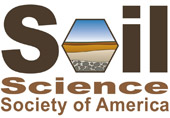Above and Below-Ground Implications of Reconnecting Urban Ecohydrology with Green Infrastructure.
Above and Below-Ground Implications of Reconnecting Urban Ecohydrology with Green Infrastructure.
Poster Number 18
See more from this Division: PosterSee more from this Session: Urban Soil Ecology and Ecosystem Services
Saturday, March 8, 2014
Grand Sheraton, Magnolia Foyer
As the majority of people begin to live in cities, they become more and more dependent on the provision of ecosystem services by these urban ecosystems. The nature of the urban environment, specifically, direct and indirect effects of urban land use on soil properties can greatly alter ecosystem functions and services in cities. Green infrastructure and low-impact design approaches may mitigate urban environmental problems, allowing for a restoration of sorts of ecosystem services in cities. However, in arid cities, the functioning of GI and LID is poorly understood, as much design principles originate from more mesic environments. Through observations of existing installations in Tucson, AZ, and controlled experiments at the Biosphere 2 facility in Oracle, AZ, I have been assessing the ability of GI approaches to storm water harvesting to facilitate ecosystem function and services in an arid context. Results from street-scape urban rain gardens indicate that urban soil conditions can be improved with small-scale interventions that reconnect urban ecohydrology. The design of such features is critical to their function, including water retention and biogeochemical processing. These principles also have implications for plant function with respect to water availability in an arid urban environment. I discuss the importance of linking ecological principles with performance goals to better inform the design of BMPs to provide suites of ecosystem services.
See more from this Division: PosterSee more from this Session: Urban Soil Ecology and Ecosystem Services
Previous Abstract
|
Next Abstract >>
